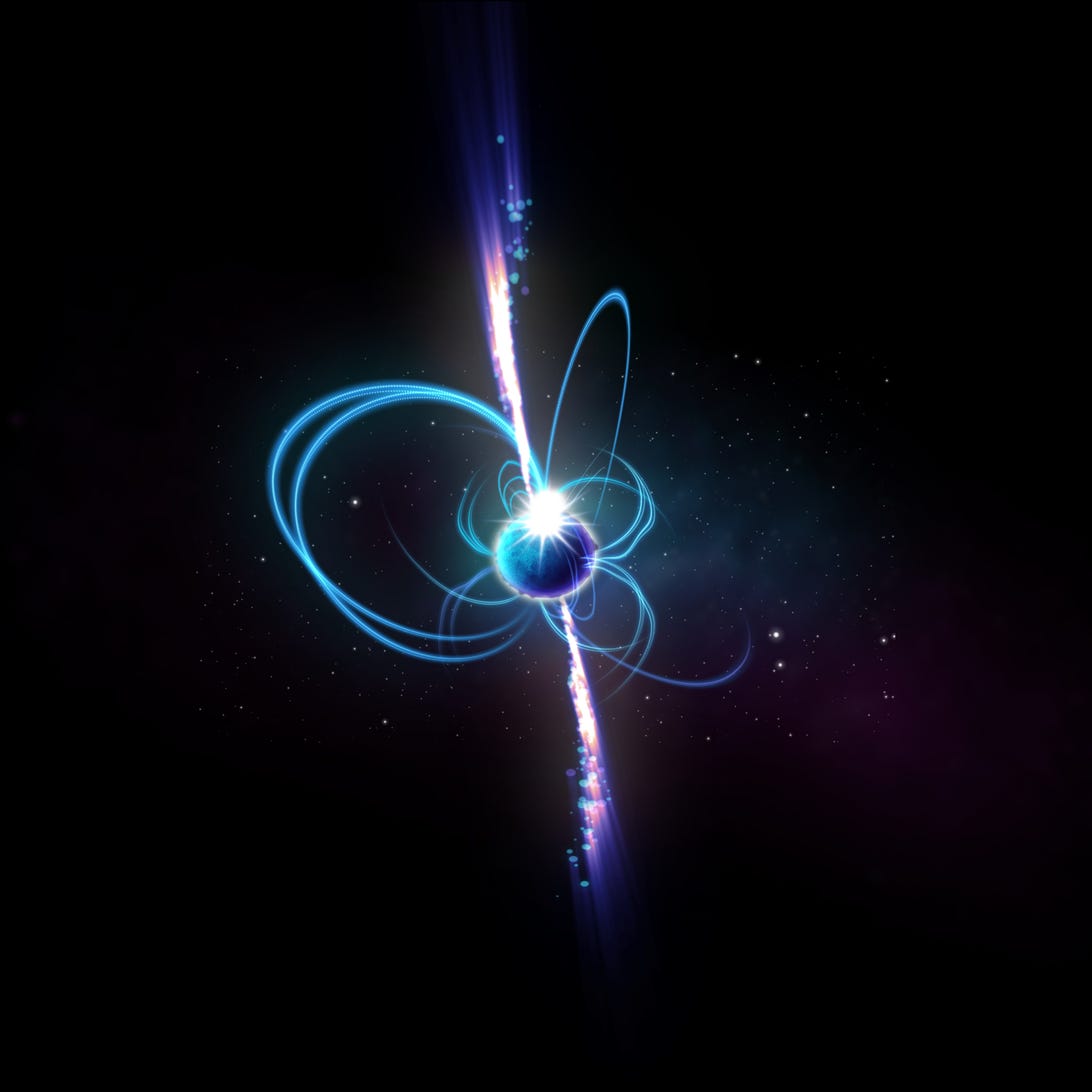
An artist’s impression of what the object might look like if it’s a magnetar. Magnetars are incredibly magnetic neutron stars, some of which sometimes produce radio emissions. Known magnetars rotate every few seconds, but, theoretically, “ultra-long-period magnetars” could rotate much more slowly.
ICRARA team led by astronomers in Australia has discovered a brand new type of object in deep space that behaves in bizarre and mysterious ways never seen before.
Something about 4,000 light-years away, which is relatively close in our cosmic neighborhood, was seen spinning around and regularly blasting out a massive burst of energy that lasts a full a minute. Even weirder, that bright beam of radiation occurred like clockwork every 18 minutes.
“It was kind of spooky for an astronomer because there’s nothing known in the sky that does that,” astrophysicist Natasha Hurley-Walker said in a statement.
The behavior is similar to that of a pulsar or magnetar, which spin around as they blast out pulses of energy that can be detected here on Earth. But pulsars pulse very quickly, usually every few seconds. An object that sends out longer bursts just a few times an hour has never been seen before.
Hurley-Walker led a team from the Curtin University node of the International Centre for Radio Astronomy Research that made the discovery, with assistance from the Shanghai Astronomical Observatory. She’s also lead author on a paper detailing the find in this week’s issue of the journal Nature.
This odd object was originally spotted by Curtin student Tyrone O’Doherty using the Murchison Widefield Array telescope in outback Western Australia. The MWA is a radio observatory that can observe a wide swath of the sky over a wide range of frequencies.
“It’s exciting that the source I identified last year has turned out to be such a peculiar object,” said O’Doherty, who is working on his Ph.D.
The galactic peculiarity could be the collapsed core of a star with an ultra-powerful magnetic field. Hurley-Walker explains that it has the characteristics of something astrophysicists have theorized called an “ultra-long-period magnetar.”
“It’s a type of slowly spinning neutron star that has been predicted to exist theoretically,” she said. “But nobody expected to directly detect one like this because we didn’t expect them to be so bright. Somehow it’s converting magnetic energy to radio waves much more effectively than anything we’ve seen before.”
For now, the unusual object has stopped sending out pulses that we can see, but Hurley-Walker says she is continuing to monitor it with the Murchison Widefield Array telescope in case it starts up again.
“If it does, there are telescopes across the Southern Hemisphere and even in orbit that can point straight to it,” she added.
She also plans to go back into the MWA’s archives to see if this object is just one member of a larger family that’s gone unnoticed until now.
“More detections will tell astronomers whether this was a rare one-off event or a vast new population we’d never noticed before.”



